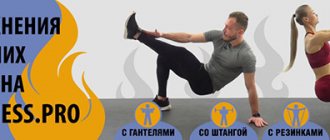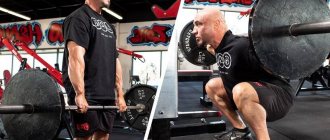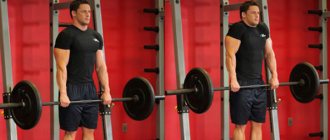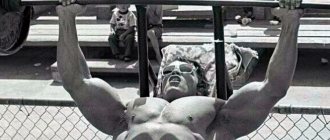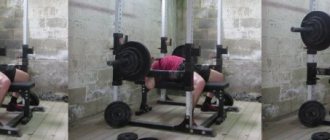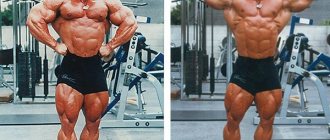Author: Timko Ilya - the ruler of the entire site and fitness trainer | more details >> Rod. 1984 Trained since 1999 Trained since 2007. Author and creator of the site tvoytrener.com. CCM in powerlifting. Champion of Russia and South Russia according to AWPC. Champion of the Krasnodar region according to IPF. 1st category in weightlifting. 2-time winner of the Krasnodar Territory championship in t/a. Author of more than 700 articles on fitness and amateur athletics. Author and co-author of 5 books.
Place in the author rating:
out of competition
(become an author)
Date:
2016-12-07
Views:
25,032
Rating:
5.0
| All articles by the author >> | Medals articles >> |
Articles are loading...
Most coaches and athletes believe that doing squats and deadlifts on the same day is wrong. Here are their arguments:
1.
These are 2 heavy exercises and doing them in one workout is too much work.
2.
If you go all out in a squat, you won't be able to deadlift. And vice versa.
It seems logical. I admit, I used to think so too. But over several years of weightlifting training, I noticed that it was quite common for weightlifters to do squats and deadlifts on the same day. And at the same time they pull and squat a lot and constantly progress in mass and strength. Of course, you can blame it all on steroids, but I suspected that it wasn’t them.
I reasoned like this: the squat and deadlift are, by and large, similar exercises. The muscle groups and working joints are the same. After all, when we pump up the lats or triceps, we often do 2-3 similar exercises for the same muscle group. So why can’t you do 2 similar exercises on your legs, buttocks and back?
What is this?
Each workout is dedicated to several muscle groups, because it is simply impossible .
We remind you that, as a rule, the weekly program is divided into 3-4 visits to the gym, between which there must be at least one day of rest. During the break, the muscles will rest, recover and strengthen. Read more about this in the article “Muscle Recovery”
Let's study the basics of training; without understanding the technique and essence of these exercises, there can be no talk of any progress. So, all exercises in the gym can be divided into 2 large groups: basic and isolation .
Squat + deadlift circuit technique
On several of my clients (including myself), I tried the following scheme for about 2 months:
1.
Once a week I did squats with a barbell on my shoulders. And then the next exercise right away is the deadlift.
2.
Moreover, I experimented with 3 types of deadlifts:
- Barbell deadlift
38,273
- Deadlift on straight legs
90,261
- Deadlift while standing on a stand
166,1014
If an athlete needed to focus on his legs, then the classic deadlift or standing on a stand was chosen. If the emphasis is on the back, then the deadlift is on straight legs.
3.
This was followed by another exercise on the legs and back. For example – lunges and/or hyperextension.
4.
At this point, the load on the legs, buttocks and back extensors ended until the next week. That is, such exercises were done once a week.
Both deadlifts and squats were performed with heavy weights for 3–6 repetitions of 3–4 working sets. Since the deadlift came immediately after the squats, a warm-up for deadlifts was either not required at all, or one warm-up approach was enough.
I placed the deadlift after the squat, and not vice versa, since practice has shown that doing deadlifts after a squat is easier than doing a squat after a deadlift. However, if a deadlift was planned, then it was placed first.
Base
Basic exercises (usually abbreviated as base in sports slang) are those exercises that involve several muscles or muscle groups at once. They can also be called multi-joint , since it is possible to involve several joints at once.
And isolating (isolation) exercises are exercises that are aimed at qualitatively working out one muscle group or one muscle. They can also be called single-joint , since when they are performed, as a rule, only one joint or two symmetrical joints are involved.
Isolation “polishes” our body; it is tuning an existing beautiful car, which we “create” with multi-joint exercises. Hmm, some kind of boyish analogy came out. If you want, insulation is a rhinestone on a manicure

